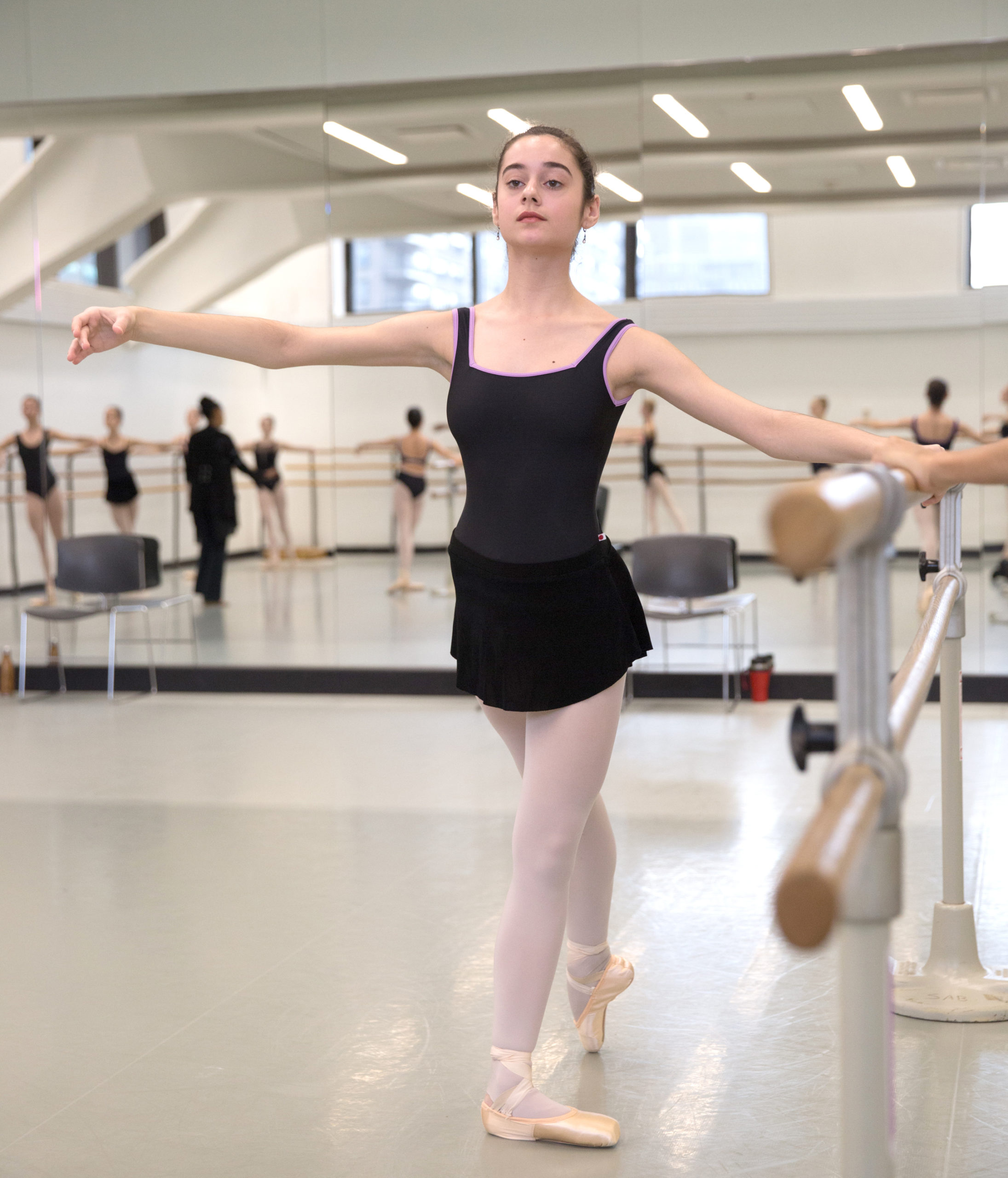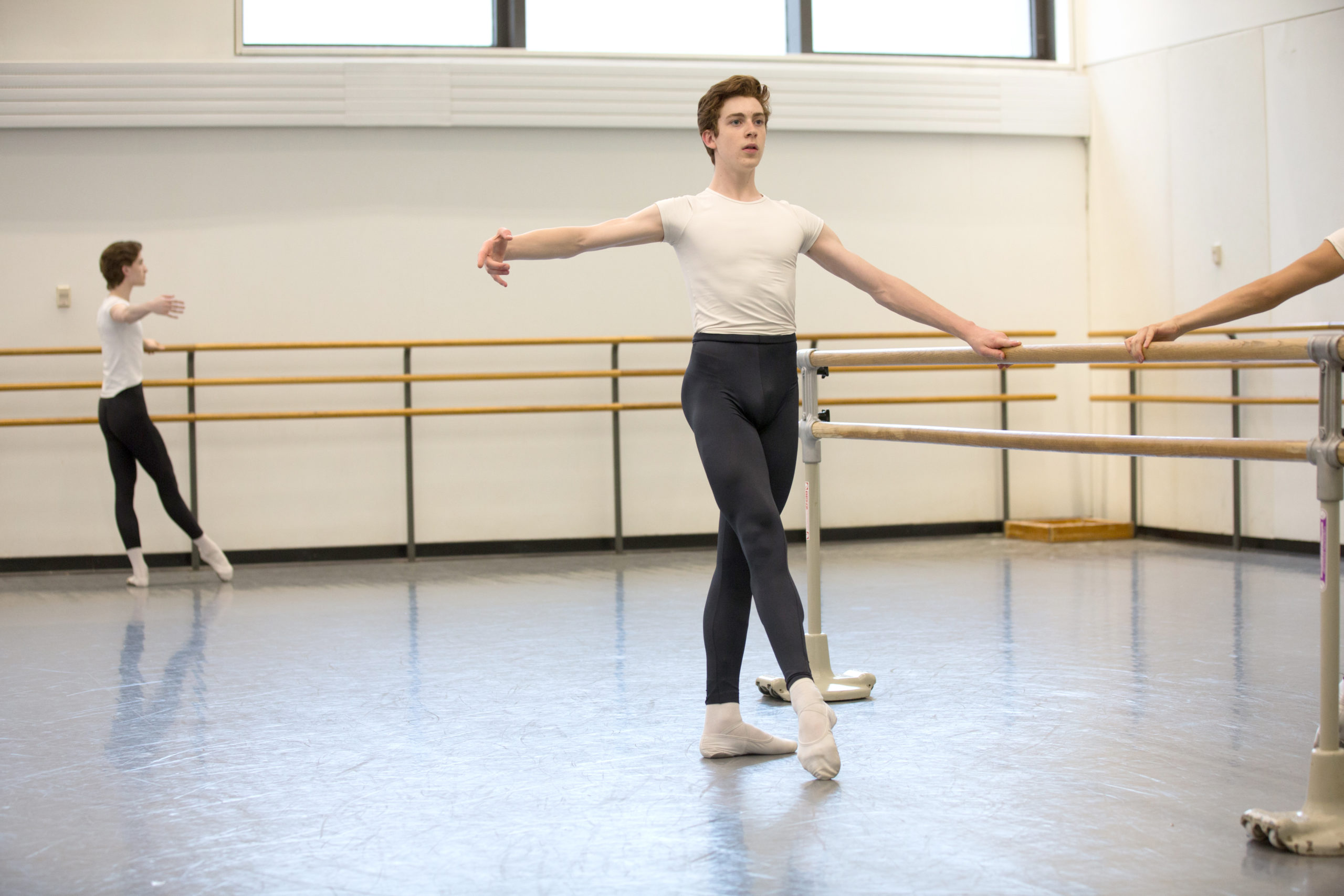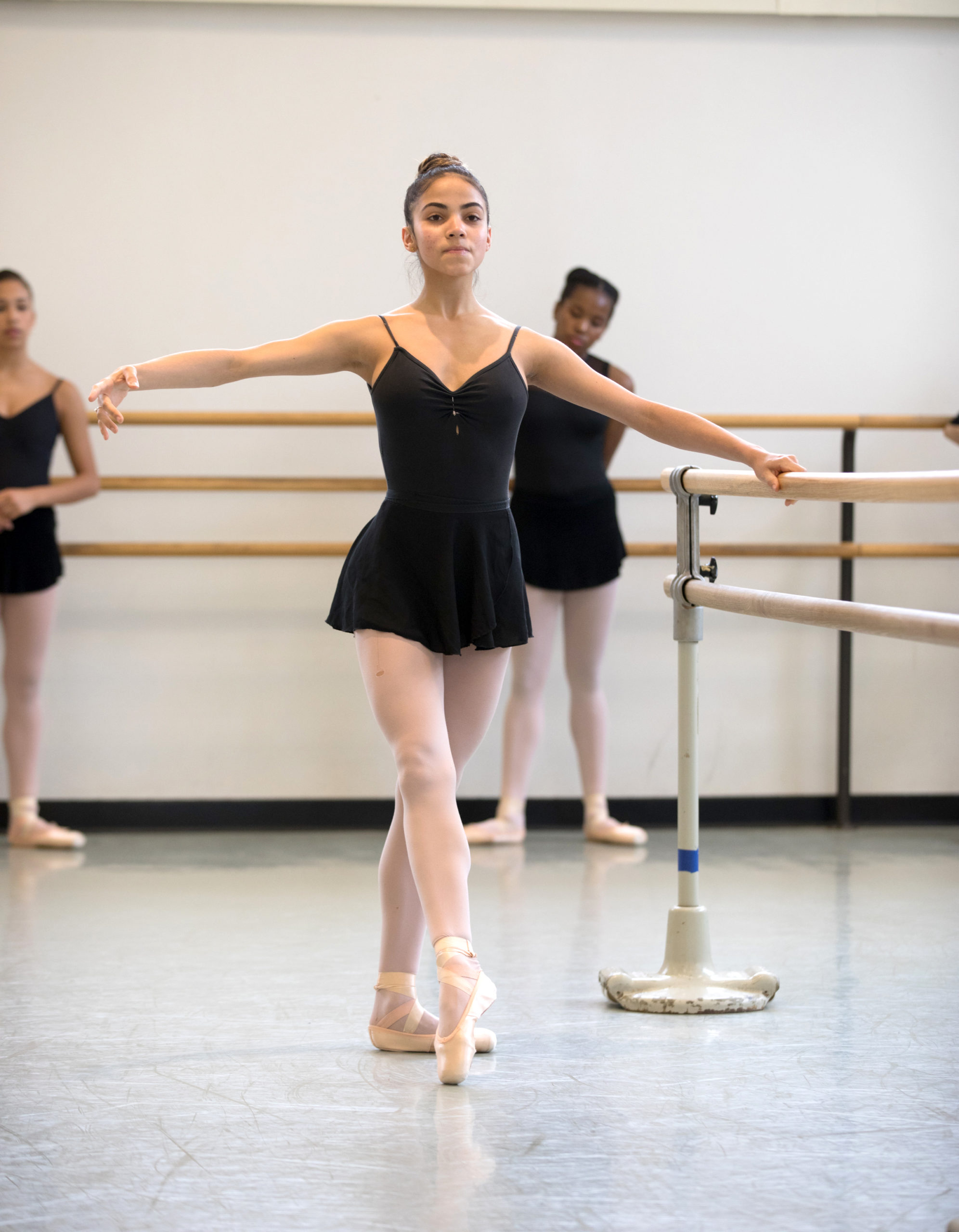Anyone who has taken or observed a ballet class taught in the Balanchine style will have likely noticed the number of battement tendus given at the barre. This relatively simple step, usually given after pliés, actually contains foundational skills imperative to the mastery of Balanchine’s articulate footwork, thus making it a vital part of daily training. Read on for our latest excerpt from Suki Schorer on Balanchine Technique for a taste of how to best tackle tendus!

Tendus were done daily and in large numbers, because for Mr. B and his company, the saying was, the more tendus, the better. We usually did sixteen, or perhaps thirty-two, front, side, and back at a moderate tempo, but often with this difference: We did one leg to the front and then turned to do the other leg front. Then we did the same thing side and side, and then back and back. By working this way, Mr. B helped to ensure that we did each set with a relatively fresh leg and therefore more correctly. It is interesting to note that when Balanchine had us do front, side, and back without changing sides, he did not need to have us finish with a final set to the side. He often said to us,
“We don’t need side again. Front and back only got sixteen. Why should second get an extra set?”
The conventional practice – front, side, back, side (usually called “en croix”) is based on musical structure, not on the logic of the directions. After the tendus at moderate tempo, we often did eight front, side, back, and, perhaps, side at a faster tempo, followed perhaps by thirty-two side only, but at an even faster tempo.

The action of the foot correctly moving out from and returning to fifth is one of the most elementary skills and a basic foundation of Balanchine’s more articulate footwork. (Another way in and out of fifth of comparable importance is the action of taking the foot off the floor discussed in Sur le Cou-de-Pied.) Certain qualities essential to the way he wanted us to dance could only be developed through mastery of this seemingly simple exercise. These included maintaining the fullest possible turnout of the working leg and foot throughout the movement as well as the fullest possible turnout of the supporting leg, maintaining the weight over the ball of the standing foot (not evenly distributed over the whole foot or settled in the heel), a light caressing touch of the toes on the floor with the metatarsals lifted, a careful and gentle placement of the foot back to fifth, a fully pointed and stretched working foot at any speed, and the facility to start and stop quickly. All of this was so fundamental, so critical, that he often advised us to practice tendus on our own, alone, every day, to achieve the correct motion and to develop muscle memory.
In many schools, the dancers are taught to go through demi-pointe as they point and again on the return to fifth. Their focus thus becomes dropping down on the metatarsals, and therefore going through the demi-pointe on the way to pointing the toes and returning. Balanchine, in contrast, observed that dancers do not actually go into a full demi-pointe when jumping or on the way to plié when landing. He, therefore, taught us to think of tendu as done in the ankle, rather than thinking of it as done by going down through the demi-pointe.

In addition to the daily tendus from fifth, we also occasionally did them from first. Tendu side from first is the simplest way to learn the correct location of side, directly opposite the supporting heel. Tendu front or back from first requires moving the entire leg on the diagonal so that the toes reach the center line of the body, which consequently brings greater awareness of its location. The common error in tendu front from first is to let the toes finish opposite the working hip or the supporting heel rather than on the center line; this is poor preparation for the rest of the technique. The reason is that in dancing, fifth position is the dancer’s home base, the place to which she most often returns and from which she leaves for the next step. When she goes forward or back from fifth, her working foot must be on the center line of her body. The details of foot and ankle action are the same for tendus from first as they are for tendus from fifth.
From fifth front, going to the front, the heel leads and the toes follow. As the heel leads the entire inside of the leg forward, the heel releases off the floor while the tips of the toes lightly caress the floor. They point in, on the center line of the body, when the working leg is fully extended. The foot is fully stretched, with the arch up and the toes pressed against the sole. The foot is pointed down in line with the leg, but with the heel up, neither sickled nor winged. When the dancer’s weight is over the ball of the supporting foot and her tendu front is in the correct position with her head held straight front, the toes are in front of her nose, which was pretext enough for Balanchine to pun, “Your nose knows.”

From fifth front or fifth back going to the side, the toes start back, leading the leg to the side, the heel comes forward as it releases off the floor and as the ankle begins to stretch. The toes again have a very light touch on the floor and are aligned in tendu side with the heel of the supporting foot. To reach this position from fifth front requires that the foot travel on a very slight diagonal back; to reach this position from fifth back requires that the foot travel on a slight diagonal front. The diagonal is a straight line- there is no curve, no “rond de jambe” quality. Maximum turnout is maintained. From fifth back going to the back, the toes lead to the back and point in on the center line right behind the dancer’s spine. As the leg goes back, it rotates out, showing the inside of the leg from thigh to heel. This is possible only if the hip line opens…
…We did the majority of our tendus at an even, moderate tempo, with the foot pointing on the “and” and closing into fifth on the beat. Mr. B compared battement tendu to the even tick-tock of the clock. But within the even tempo, the tendu is phrased. It starts out rapidly, then slows slightly to reveal the full point. It starts in sharply and then slows as the foot is placed in fifth. At a slow or moderate tempo we stop in fifth, our home base, the place we always return to.

In moderately faster tendus the foot starts rapidly out of fifth and points, then is brought in sharply, but is still placed (never banged or slammed) into fifth. When the tempo is very, very fast there may not be enough time to get all the way back into fifth, and there is certainly not enough time to stop and put the heel down. Then the foot is brought in toward fifth as much as possible and then returns to point. The emphasis is on making the foot point fully when the music is too fast to allow for a tight, or, when closing from the side, a crossed fifth position. However, the dancer must stop in fifth, or at least try to, before changing direction; this stop, or pause, “announces” the change. Sometimes, to clearly enunciate the new direction, we held on to the fifth, delaying the start of the next tendu to show that position, but speed ing up to catch the beat on “and.”
|
Essential Details in Battement Tendu
Precise pointing of the working toes in front and in back (on the center line of the body); to the side, point them directly side, never back of side
Maximum turnout at all times
A light touch on the floor
Fully pointed working foot with the toes pressing against the sole of the shoe in tendu
Not working through demi-pointe; keeping the metatarsals lifted
The clean stop in fifth, except when the tempo is too fast to do so
When the leg is back: working hip line open “leg is part of hip”; supporting hip line straight; shoulders square; back straight; and stomach pulled in
|
(Schorer, 1999, p.62-67)
Schorer, S., Lee, C. R., & Rosegg, C. (1999). Suki Schorer on Balanchine Technique. A.A. Knopf.







